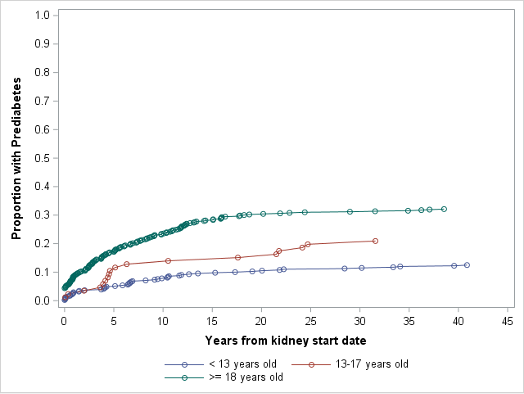Nephrology: CKD
Nephrology 6: Glomerular/Clinical and Basic Science
63 - Prediabetes in Children, Adolescents and Adults with Glomerular Disease
Publication Number: 63.351

Zubin J. Modi, MD, MS (he/him/his)
Assistant Professor
University of Michigan Medical School
Ann Arbor, Michigan, United States- DS
Daniayl Shamim, MPH
Research Compliance Specialist
University of Michigan Medical School
Ann Arbor, Michigan, United States
Presenting Author(s)
Co-Author(s)
Background:
Globally, the prevalence of childhood prediabetes has risen. Few studies have evaluated the relationship between prediabetes and glomerular disease in children and adolescents.
Objective:
Examine the prevalence and associated risk factors of prediabetes in children and adolescents with glomerular disease.
Design/Methods:
Data was extracted from University of Michigan and Kidney Research Network electronic health record registry with patients classified by age at glomerular disease at diagnosis or first nephrology appointment (child (age < 13y, n=409), adolescent (13-17y, inclusive, n=86) and adult (≥ 18y, n=526)). Data included diagnosis, laboratories, medications and procedures. Primary outcome was prediabetes after kidney disease onset and exposure of interest was age of kidney disease onset. Definitions include: Prediabetes = prediabetes ICD, HgA1c range of 5.7-6.4, or random blood glucose of 140-199 mg/dL; Hypertension (HTN) ICD or antihypertensive therapy; HTN was coded as uncontrolled if BP remained in hypertensive range following HTN diagnosis. The prevalence of prediabetes was calculated per 1000 patient-years by age group. Using propensity score methods, we matched prediabetes case to controls on 1:2 ratio, aligning patients’ length of kidney disease and imputing an examination date comparable to prediabetes onset for the control group. We used multivariable logistic regression to estimate the association between candidate risk factors (age, sex, race, BMI at onset, HTN at onset, diabetogenic medication used prior to prediabetes onset) and prediabetes development. We refined model predictors and generated optimal regression model with backward elimination.
Results:
216 of 1021 developed prediabetes while under observation after glomerular disease diagnosis. Figure1 shows prediabetes prevalence by age group. The median time to prediabetes onset for children was 6.6 (IQR 1.4,13.5) adolescents 4.9 (IQR 3.9,21.5) and adults 5.5 (IQR 2.2,11.7) years. When compared to controls, older age, Black race and uncontrolled HTN were associated with higher odds of prediabetes (Table1). 85 of 216 prediabetes patients progressed to diabetes.
Limitation: Factors with a modest influence on prediabetes risk may not have been identifiable with current sample.
Conclusion(s): The incidence of prediabetes occurs with a stepwise increase in children, adolescents, and adults with glomerular disease. Strategies for systematic screening and intervention will be needed following confirmation of these results.
.jpg)
